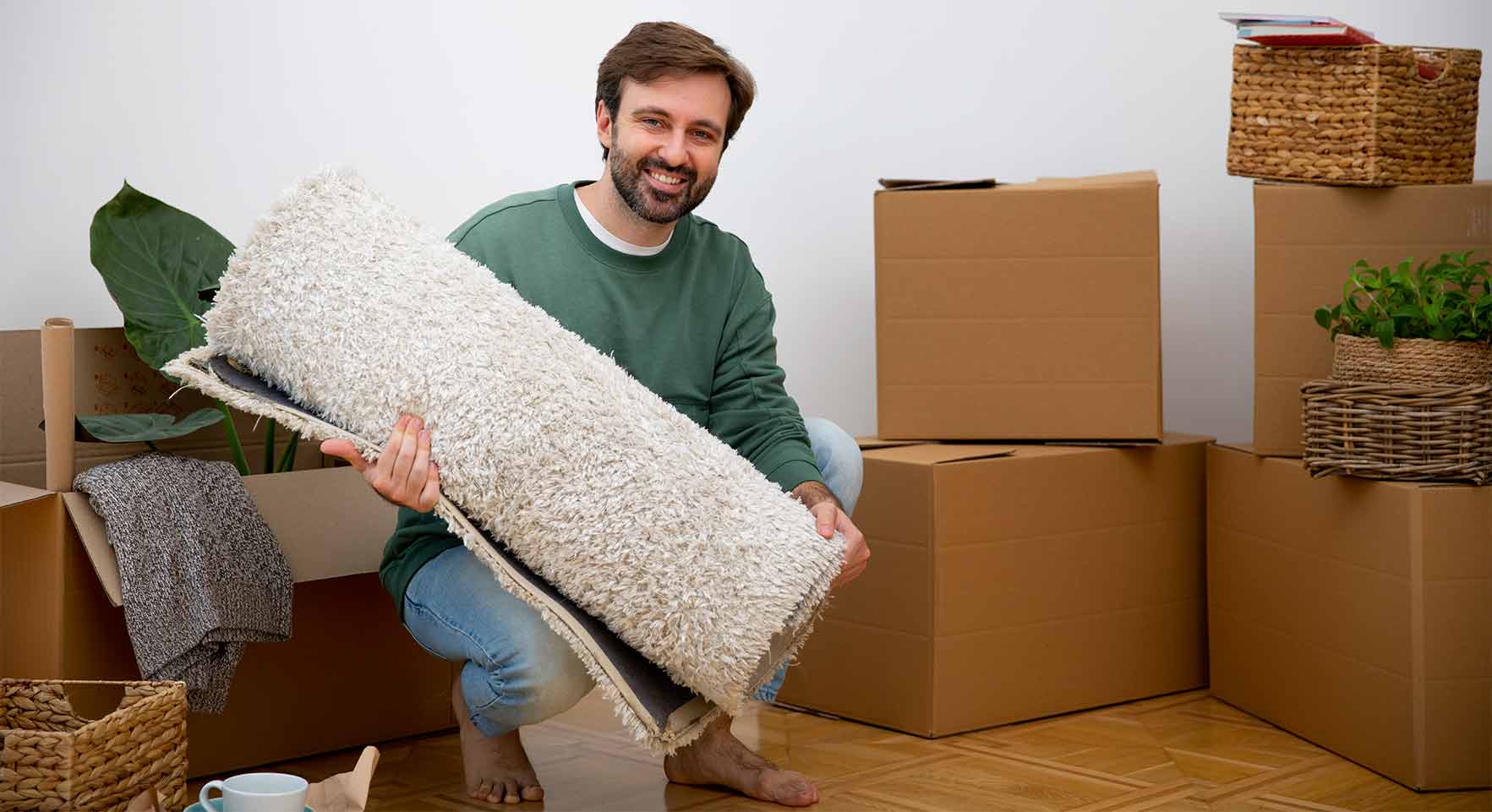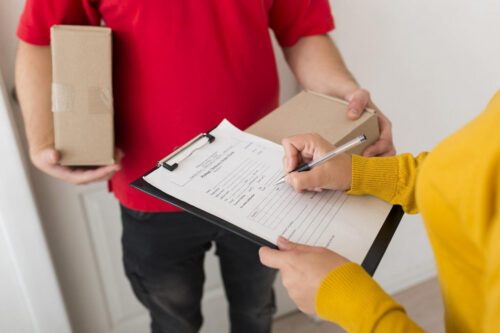It’s about that time again: time to move. Moving can be an exciting time, as it marks the start of a new chapter. The actual move, however, usually saddles people with a bit of stress. How do you know what moving supplies you need? Which packing supplies are absolute necessities and which ones can you do without?
If you’ve only moved once or twice in your life, first of all, lucky you! With that said, you may not know the ins and outs of moving materials. For example, do you really need heavy duty wardrobe boxes or will cheap cardboard boxes suffice? What should I pack first when moving? And, of course, what are the most important moving supplies needed for the move? These are the types of questions we’ll answer here.
Need moving help fast? Try Clutter!
Where to Start With Moving Supplies
Before we jump into the specifics, the first step is to think of the bigger picture. That means figuring out what you’ll need before the day of the move.
A lot of people get caught up in the scramble of moving because they try to do everything at once. That’s a common mistake with moving, but one that you don’t have to make yourself. There’s a lot you can get done in the days, weeks, and months leading up to moving day. By slowly pre-packing, you’ll alleviate a lot of the unnecessary stress and make the actual day of the move way less of a hassle
Here’s a shortlist of what to stock up on before the packing even begins:
- Cardboard moving boxes
- Wardrobe boxes
- Packing tape
- Bubble wrap
- Packing paper
- Scissors
- A box cutter
- Painter’s tape
- Labels
- Pen and paper
- Heavy duty trash bags
- A permanent marker
- Moving blankets
- Edge protectors
- Shrink wrap
- Foam sheets
- Mattress bags
- Straps
- Ropes (if you’re loading the rental truck/moving container)
- Disc locks
- Floor protectors
Learn more: How to Pack Fragile Items for Moving: 10 Delicate Tips
Keep in mind that this is not an exhaustive list of what you’ll need. It’s just a good place to start. Additionally, remember that you won’t use everything before the day of the move. These are just the moving supplies you should have in your house so you’re good and ready once moving day comes along.
How to Choose the Right Packing & Moving Supplies
Now that you have an idea of what to start shopping for when moving, the next step is to get specific. What kind of boxes do I need for moving? How many moving boxes will I need? It all comes down to what you’ll be packing. Glass items, furniture, books, clothes, mattresses, and utensils all have different handling requirements. As such, the types of boxes you’ll use for these items and the way you pack them will vary.
Moving Box Types
Types of moving boxes can be broken down into the following categories:
- Small moving boxes
- Medium moving boxes
- Large moving boxes
- Specialty boxes for moving
How many of each you’ll need depends on your belongings and what you’ll be moving. Packing up a 3-story house will probably require more boxes than a 1-bedroom apartment, but how many more boxes that is depends on your inventory.
So, step one is to take inventory of your item, as suggested by Moving.com. Keep in mind that not only will you need the boxes but you’ll also need other moving supplies like bubble wrap and packing paper. These will take up space and should be accounted for when considering big moving boxes vs. smaller ones.
Learn more: Packing Ornaments: Essential Tips for Moving and Storage
Where to Purchase Moving Supplies
In discussing the best moving supplies and figuring out the most important ones, you’ll also need to consider your sources. That means where you buy your packing supplies. While some people think cheap cardboard boxes will do, the truth is that they’re rarely sturdy enough to support your precious cargo.
Your belongings are a reflection of the life you’ve built for yourself and if you’re moving them, that means you want to preserve their condition. The last thing you want is for an heirloom vase to break into a million pieces during the move. Consider investing in several high quality moving items like:
- Glassware packing boxes
- Wardrobe moving boxes
- TV moving boxes
Using these to safeguard your items will make the move a whole lot less stressful. Not sure where to purchase these packing supplies? The easiest way to go about it is to work with a professional moving company like Clutter. Not only will we bring all the necessary packing supplies to you, but we’ll also help you arrange them so your fragile items stay protected and the entire move goes off without a hitch.
If you’re looking to get a head start, however, stores like The UPS Store, The Home Depot, Lowe’s, and U-Haul will have everything you need.
Pro tip: to save money, consider renting moving supplies like dollies and furniture pads.
Learn more: How to Pack Dishes & Glasses for Moving And Storage: 6 Easy Tips
5 Pro Tips and Strategies for Packing
Now that you’re equipped with your handy dandy list of essential moving supplies, the final step is to get packing! Don’t worry – it’s not as daunting as it seems. There are several ways to make moving less stressful and more manageable.
1: The Room-by-Room Approach
Don’t know where to begin? Start with one room at a time. Alternatively, you could also do one room category at a time, such as all the bathrooms or all the bedrooms. As you pack, label the boxes to keep everything organized. Additionally, consider marking where you’ll want everything to go in the new space. For example, if you’re packing your linens and you know that you’ll want them to go in the upstairs linen closet in your new home, write “LINENS- UPSTAIRS CLOSET” on the box. This will be one less thing to think about once the move gets underway.
2: Put the Heavy Items on the Bottom
Any professional mover will tell you that the best way to prevent clients’ items from breaking is to load the heavy items on the bottom. That means the bottom of boxes, the bottom of containers, and the bottom of the truck. Think of it like loading your groceries – you wouldn’t put your carton of eggs in the bag first, so why would you start with a lightweight jewelry box?
3: Fill Empty Spaces
Eliminate the risk of things slipping and sliding all over the place during the move by filling empty spaces in your moving boxes. Bubble wrap and packing paper will be your best friends here.
4: Have a Personal Moving Day Kit
While you can pre-pack a lot, there are going to be some items that have to wait until the last minute. Think toiletries, a change of clothes, etc. Additionally, there are items you’ll want to have on-hand should you need to make any last-minute changes to your moving boxes. Having a personal moving day kit will help you out here. Put a small pair of scissors, a pen and paper, and some extra packing tape in a separate little bag so you’re ready if you need to cross anything out or relabel something at a moment’s notice.
Learn more: How To Pack Picture Frames For Moving: 8 Easy Steps
5: Label Everything
This pro tip for moving is one that we can’t stress enough: label EVERYTHING! This is going to save you multiple headaches and hours of time, not to mention money.
How to Save Money on Packing Supplies
Speaking of saving money during your move, there are a few easy ways to do so.
- First, label everything! This will prevent you from having to reopen boxes and waste packing tape.
- Second, consider renting certain items. Moving blankets and floor protectors can often be rented from reputable moving companies.
- Additionally, reuse TV moving boxes if you still have them. They’ll be the right size for your electronics and you won’t have to worry about buying extras.
- Last but not least, if you’re really looking to be strategic, hire the pros! A professional moving company like Clutter will know the essential moving supplies you need based on your requirements. We’ll not only help you pack it all up, but we’ll also make sure the move is smooth and unproblematic. That’s truly the best way to save money both in the short and long term.
Before we wrap it all up (with bubble wrap and tape, that is), here are a few final words of wisdom about moving and packing.
FAQs for Moving & Packing
Q: What should I pack first when moving house?
It’s best to start with the things you don’t need immediately, as those will be the least disruptive to your life during the move. Additionally, when it comes to actually packing the boxes, load the heavy things first so they’re at the bottom. Think heavy to light and you’ll be alright!
Q: What are some common mistakes people make when choosing moving boxes?
A lot of people think cheap moving boxes will suffice when they’re moving. While a few inexpensive boxes or reusable cardboard boxes are fine, it’s always best to go for quality. You don’t want any of your precious belongings to break during the move.
Q: How can I estimate the number of packing materials I will need?
The best thing to do is to take inventory of your belongings and divide them out by category. If you need help determining how much packing materials you’ll need, consider reaching out to Clutter. We make it easy by not only giving you an estimate for the move but also packing it all up for you.
Q: How can I move heavy items safely without professional movers’ help?
Put the heavy items in the bottom of moving boxes first and make sure they are thoroughly protected with bubble wrap and packing tape. As for lifting them, consider enlisting the help of 1-2 extra people.
Q: What should I have in my personal moving day kit?
This will vary based on how far you’re moving and your individual needs. Still, it’s a good idea to have extra supplies like tape, a permanent marker for labeling, and a good attitude on hand! Additionally, hang onto any things like toiletries and last-minute items you’ll need the day of the move. It also never hurts to have an extra change of clothes so you can feel refreshed and some snacks to keep your energy levels up.
Q: How far in advance do I need to start packing for my move?
Once again, this is a personal preference thing. Some people start packing months in advance. The slow-but-steady approach is often best for larger moves or cross-country moves. Others wait until the week of, which can be a bit of a scramble but it’s sometimes necessary. There’s no right or wrong way to do it. Think about what’s best for your lifestyle and what will be least disruptive in both the short and long term.
Ready to make your next move the easiest it’s ever been?Reach out to Clutter








